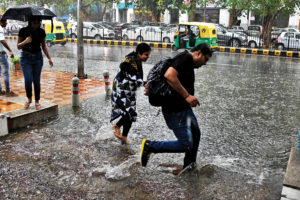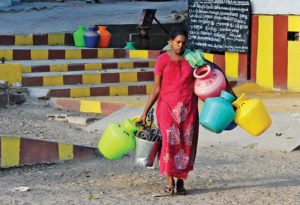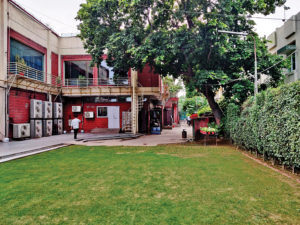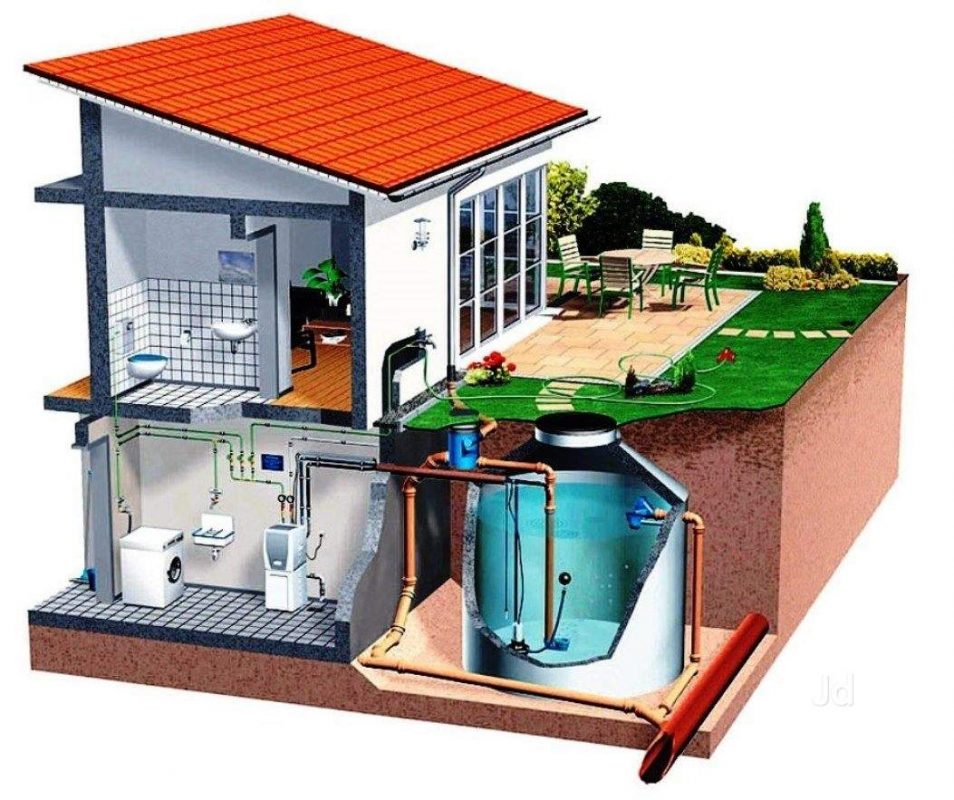Rainwater harvesting is the only hope for Delhi to avert the major crisis predicted by NITI Aayog – and for this, every household’s contribution counts
It rained about 199.2 mm from 1 to 30 July in the Capital city this year (around 1% less than the 30-year average of 201.1 mm), but was it collected for a city in dire need of water?
Other than some government offices, schools and commercial buildings, hardly any residential areas have the facilities. When the NITI Aayog predicts the groundwater to completely run dry by 2020, shouldn’t people be doing more?
It’s not some mysterious power which has sucked up all the water, it is the systemic abuse of groundwater. The scale of this disaster-in-the-making can be known by looking at a study published in International Journal of Advance and Innovative Research in 2018. Delhi managed to bag the rank of third among states in terms of excessive groundwater exploitation for drinking, industry and irrigation use. This abuse, it had said, was by 67% of Delhi’s residents living in 1,797 unauthorised colonies which draw underground water for their daily use.
With such figures, the future promises to be grim. But one of the things which could help avert an urban drought is if citizens start taking rainwater harvesting seriously.

Overall, the city received 210.4 mm precipitation against the long-term average of 266.8 mm since 1 June, when the monsoon season starts, a deficiency of around 21%, IMD data showed.
From a rainwater harvesting well which is two metres by one metre wide, it should be able to catch anywhere around 5 lakh litres a year. And that’s a conservative estimate, says Jyoti Sharma, the founder of FORCE — an NGO which has been working on rainwater harvesting for the past 14 years.
She says that their calculations show how well Delhi could be helping itself. In six cities including Delhi, they found that if “each resident and the government made the effort, we would
manage to harvest 30% of the
rainwater”.
In another strategy, Sharma points to about 1,000 water bodies that Delhi does have, for which “courts themselves have given protection to 629”. If we were to use, she says, these water bodies plus do rooftop rainwater harvesting, use the existing recycled water — the ones which have existed since the past five years —the share of “our Yamuna water”, the flood plains “which has the ability to absorb the swelling up of the rainwater in the monsoon”, then there would be “absolutely no reason why” Delhi would need even a drop of water from any more sources.
Not only would the city be self-sufficient, but there will in fact be access.
A scenario such as that seems beyond reach. Many colonies do not get water 24×7, some do not even have water pipelines, which points to the claim of almost 70% residents using groundwater to source it. Also, the access that majority of them get is through illegal bore-wells. The numbers say there are at least 5,000 such setups existing in the city.
The Delhi Jal Board (DJB) has quite the task to tackle this menace, which promises to suck every drop dry.
Spreading the word
Not all colonies have learnt as early as say, Panchsheel Park, whose Resident Welfare Association established a rainwater harvesting system as far back as 2002. Slowly, Kripal Dutt, the assistant society manager tells us people have started building their own because of the law requiring it.
Nonetheless what the effort has seen is a gradual increase in the groundwater levels, which had been directly hit due to residents using bore-wells.

The society first built a rooftop and surface runoff harvesting system costing Rs 8 lakh. Water would be collected in 36 recharge wells constructed inside the storm water drain and help recharge groundwater.
Now, homes built on plots of 100 square metres and above come under the ambit of the law for mandatory building of rainwater harvesting system; earlier, owners of plots of 500 sq m were expected to build these systems.
This, Dutt says, has helped the area increase its groundwater level substantially.
Could this method save our city? Sharma of FORCE thinks so, pointing to the recent scenario in Chennai when the entire city was engulfed in a water crisis. People waited in large queues for a drop of water, restaurants and hotels were forced to shut down, and fights broke out for this precious life source. Sharma says that if the city had upheld late Chief Minister J Jayalalithaa’s ordinance which had made rainwater harvesting mandatory, Chennai would not have seen such dark days.
This was in 2003, and it worked very well, Sharma points out, for at least a couple of years. “What happened later was that for the almost 10 lakh structures made, there was no yearly maintenance taking place. Nor was it monitored.” With systems lying in a decrepit state, they no longer served the purpose they were built for.

Which is why getting people to understand the current situation and how they could help it would be of utmost importance. The DJB, in an effort to make rainwater harvesting more viable, had come up with much simpler designs of Rain Water Harvesting Structures, and then set up three Rain Centres at RK Puram, Lajpat Nagar and Dwarka “to create large-scale awareness in order to facilitate people to implement rainwater harvesting” in 2016.
Three years later, the centre in RK Puram is thriving while the other two slowly pick up pace. Interestingly, FORCE was tied up as the NGO to run these centres but that didn’t materialise and they held on to RK Puram while the DJB took over the reins of the Lajpat Nagar and Dwarka centres.
With the law coming into form, the rain centres had a mission: “These centres were supposed to be a place where people who wanted information about the scheme and design could procure it from here. It was part of the DJB office but managed by us”. But Sharma points out that in the first couple of years, nothing moved. “The scheme did not have much awareness. And the government was also wavering, so nothing serious happened.”
Things have changed, however, in the last couple of months. With FORCE making the RK Puram centre as a nodal point for advice and awareness programmes throughout Delhi, the activity has picked up. The NGO also started reaching out to schools and RWAs, helping design the water harvesting points.
For cooperative housing societies at least, when approached by the RWAs, FORCE builds these water systems for them. One of their partners is Water Aid India, with which they have built rainwater harvesting structures in slums like Harijan Basti in Vasant Kunj and Bhim Basti towards Delhi-Gurgaon border. They have also designed structures for Delhi Haat and the Garden of Five Senses, which will soon be operational.
A shining example of rainwater helping recharge an areas groundwater level is Alaknanda in South Delhi. They also have an ingenious idea of inducting residents of areas and even teachers of schools and colleges into the programme by terming them ‘water guardians’. “In terms of wanting to know about water harvesting, yes, there is a lot of interest. But in terms of doing rainwater harvesting, because there is a regulation, people feel like it’s being imposed on them. Still, the fact is that they are doing it”, so it’s a win-win situation Sharma says.
While this centre may be thriving, “Logistically, in Lajpat and in Dwarka, nothing was happening.” Now however, there is some good news, as she says work is being done.
Strong measures
In its bid to fastforward to the future, the Delhi Cabinet had in July approved the proposal to make rainwater harvesting mandatory at all city government buildings.
“Delhi cabinet decides to make rainwater harvesting mandatory for all its government buildings. HoDs have been directed to install systems in buildings which don’t have it and existing systems to be cleaned and kept ready before Monsoon rains.@gssjodhpur (sic),” Kejriwal had tweeted. While it will perhaps not make this year’s monsoon, for next year at least, the city’s government buildings would be equipped.
Take the Railway Board building in Delhi. While it had implemented the rainwater harvesting system a good while back, it became defunct when the Metro construction impeded its functioning. The system is being built again for a whopping Rs 25 lakh. Now every drop that falls is not wasted, collecting in the ever-receding groundwater acquifers of Delhi.
Only strict implementation can turn around what the city’s fate is pushing the people to – a scenario like Chennai’s. The government crackdown has seen a semi-government run school being fined Rs 5 lakh for not building such a system.
In a city like Delhi, perhaps this is the only way that people would take notice and act.
On its part, the Delhi government has also decided to build structures in the Yamuna floodplains for recharging of groundwater. The scheme, chief minister Arvind Kejriwal says “will help Delhi in the future to tackle water shortages”. In the next monsoon, work to recharge groundwater in the Yamuna floodplain will be undertaken.
At present, 80 million gallons per day (MGD) of ground water is extracted, according to the DJB. For now, what the state has is a water sharing process which sees Haryana providing 584 MGD, and Uttar Pradesh 250 MGD, according to figures provided by the Delhi Jal Board. This brings the total output from the sources to 930-935 MGD while demand, according to the water authority, is 1,140 MGD.
Even Delhi’s neighbour Gurgaon could do a few things to change its scenario.
Every year sees rain stagnating alongside the roads of Gurgaon, leading to major traffic jams. Instead, if the government finds a way of directing this rainwater into harvesting systems, it could act as a major source of groundwater while also helping the traffic situation.
One report said that in five years, from 2014 to 2018, the groundwater table in Gurgaon had reduced by two-and-a-half metres. The same report pointed out that the department of agriculture found that in 2018 the district overdrew on its groundwater reserves by 226%.
A survey by the Centre for Science and Energy in 2011 revealed that there are at least 30,000 borewells in the city. Now this city too is pushing for rainwater harvesting — one of the oldest sources of water for households.
KNOW YOUR LAW
– The Central Ground Water Authority (CGWA) directed group housing societies/institutions/schools/hotels/industrial establishments/farmhouses in South and South West districts and group housing societies located outside notified areas of NCT of Delhi where ground water levels are more than 8 metres below the ground surface to adopt rooftop rainwater harvesting systems in
their premises.
– Union Ministry of Urban Development and Poverty Alleviation has made modifications to the building bye-laws that require water harvesting through storing of water runoff including rainwater in all new buildings on plots of 100 sq m and above will be mandatory.
– Building plans are not sanctioned unless such provision is provided. DDA/MCD representatives undertake a site inspection before issue of Completion Certificate to the building and ensure that the RWH is made as per plan.
– Buildings with plots of 200 sq m or above that extract ground water through tubewells, borewells, etc need to implement rainwater harvesting.
– Financial assistance is given to a maximum of 50% of total cost of the rainwater harvesting structure or Rs 1,00,000 whichever is less. Contact RWH Cell for more info.





